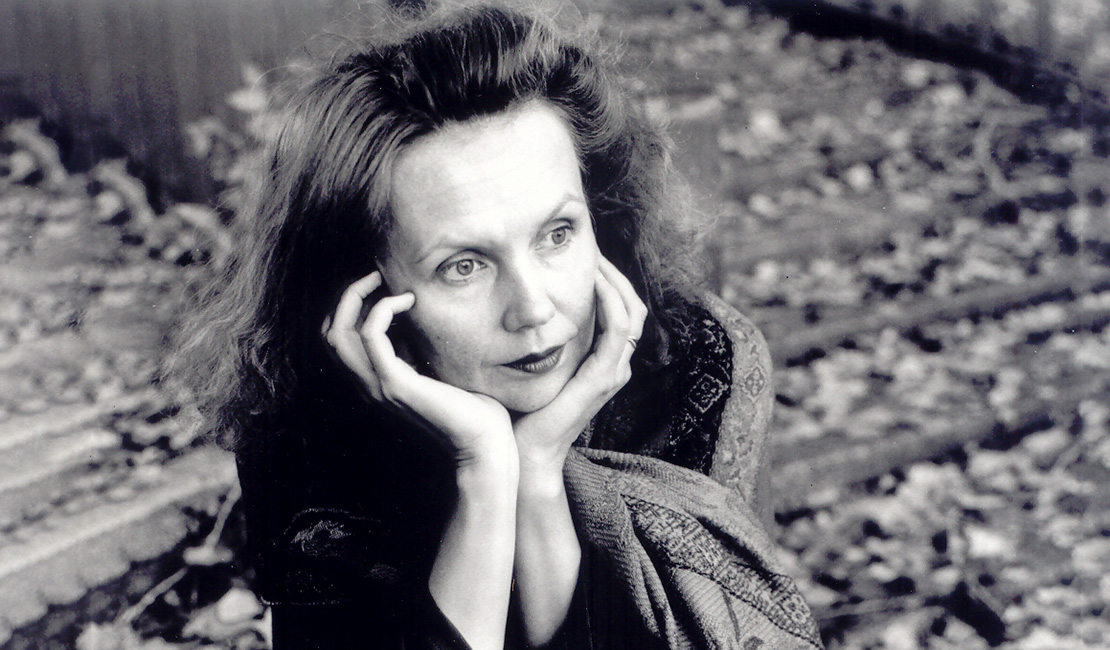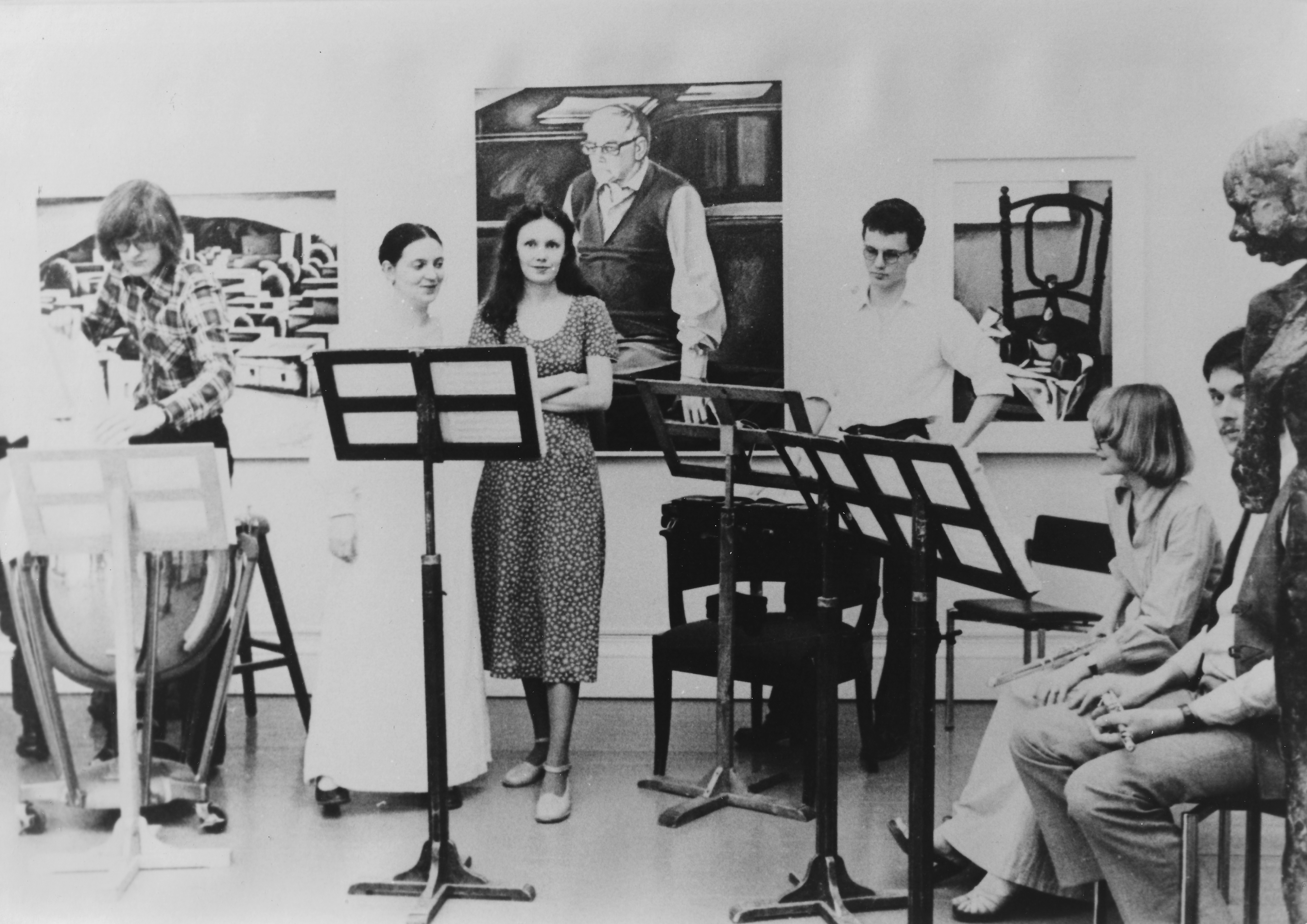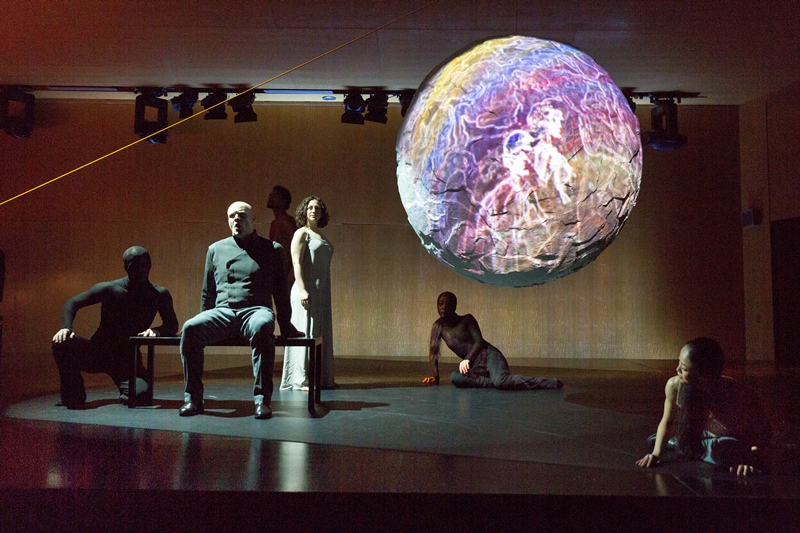Kaija Saariaho’s Poetic Montages

From the very beginning of her career as a composer, Kaija Saariaho has turned to poetry as a material and inspiration for her music. The forms and logics of poetry have played a defining role in her output since then.
EARLY YEARS.
In her years as a student in composition at the Sibelius Academy in Helsinki, and afterwards as a young composer, Saariaho wrote a lot of vocal music based on poems by Finnish 20th-century modernists, e.g. Edith Södergran (the four-part song cycle Bruden), Gunnar Björling (the choral cycle Nej och inte, from which she adapted the song Du glick, flög), Solveig von Schoultz (Ju lägre solen and its later version Adjö), Pertti Nieminen (whose translation of Li Qinzhao became the song Jing). In a similar style, T.S. Eliot’s poem The Hollow Men was the source of her first stage work, scored for soprano, tape and lights: Study for Life, first premiered in 1981. In the same year, Saariaho created … sah den Vögeln for soprano, flute, oboe, cello, piano, and electronics, constructed around a montage of fragments from 20th-century German and American poets.
In all these early works, poetry provided the composer with aphoristic and fragmented material that suited her diffracted treatment of vocal expression, then chiefly inspired by the works of Luciano Berio. Saariaho chose poems whose structure allowed to create her own expressive musical form – or deconstructed them to that effect – all while erupting into strong images. As she moved to France in 1982, she got acquainted with the work of French poets such as Guillaume Apollinaire and Saint-John Perse, whose texts invited in and for themselves new formal solutions: Apollinaire’s calligramme Il pleut inspired Saariaho to transpose the poem’s vertical layout into her setting’s piano lines, while Perse’s long verses were at the core of her seminal piece for flute and electronics Laconisme de l’aile, in which fragments from a poem are whispered into the instrument and transform into music.
Although over the 80s Saariaho largely distanced herself from writing for the voice to focus on electro-acoustic music, poetic texts stayed strongly present in her output. In her instrumental music of that same period, a poetic source is sometimes entirely dissolved into the sound material and reaches the listener only in trace form, such as the whispering of a poem by Arseny Tarkovsky in the string quartet Nymphéa, syllables from Henry Vaughan’s The World uttered by the flutist in the ensemble piece Lichtbogen, or fragments by Jacques Roubaud in the electronics of the ballet Maa.

Kaija Saariaho rehearsing Bruden in Helsinki, 1978 © Saariaho Archive
1990s: RETURN TO VOCAL WRITING.
As Saariaho progressively returned to vocal music, harmonic and intermedia diffraction of voice played a great role in her use of text in the 80s and 90s, which was seldom linear and narrational. In the same way that sound montage on tape had opened Saariaho’s music to more fluid logics, poetry provided her with a method for this diffraction and perpetuated it on the level of language – an example combining both being the tape piece Stilleben, built from fragments of multiple authors. The nature of poetry’s importance to Saariaho as a method is manifested by the similar titles of two unrelated but contemporaneous works composed in 1988: Grammaire des rêves (for two singers and four instruments) and From the Grammar of Dreams (for two singers and electronics, also arranged for solo singer accompanied by her own voice in the electronics), based respectively on texts by Paul Éluard and Sylvia Plath, which Saariaho cut and collaged herself. A similar method was used in 1991 in the choir piece Nuits, Adieux, formed from text material borrowed from Jacques Roubaud (in the “Nuits” sections) and from Honoré de Balzac (in the “Adieux” sections). Nearly a decade later, works were also set to the intrinsically diffracted voice of Friedrich Hölderlin’s last poems, which he wrote shattered by mental illness: the choir pieces Tag des Jahrs and Überzeugung, and the song for soprano and four instruments Die Aussicht.

From the Grammar of Dreams by singer Pia Freund and dancer Minna Tervamäki, 2017 © Vili Kellokumpu
The method of collaging poetry, in increasing integral form, with the composer effectively serving as her own librettist, has been fundamental to the making of many major orchestra works by Saariaho in her more mature period, including the orchestral song cycle Château de l’âme (for soprano and female choir) and the piece for orchestra and choir Oltra Mar – two stepping stones towards the writing of her first opera. Saariaho would revisit this methodology in later stages of her career: True Fire for baritone and orchestra, setting poems by Seamus Heaney, Mahmoud Darwish and the Tewa people, interconnected through text by Ralph Waldo Emerson, was conceived in 2014 as a male pendent of sorts to Château de l’âme. All these works montage together texts, often from heterogeneous sources, into a new dramaturgical whole that typically follows an associative ‘grammar of dreams’ to explore layers of human experience, either archetypal, mundane or mystical – typically, all three intertwined.
2000s: POETRY TAKES THE STAGE.
Given her tendency to approach text in the form of poetry rather than narration, it is no coincidence that Saariaho’s first opera, L’Amour de loin, premiered in 2000, was based on the life and work of the 12-century troubadour Jaufré Rudel. As a preparatory work, she set for soprano and electronics Rudel’s most famous poem as the song Lonh, which also became the opera’s centerpiece. With L’Amour de loin’s librettist Amin Maalouf, who would also write the libretti to three other stage works of hers (Adriana Mater, La Passion de Simone, Émilie), Saariaho created the song cycle Quatre instants, describing in poetic and kaleidoscopic form emotional states of a woman succumbing to a forbidden love.
After this experience, Saariaho revisited assiduously the song format characteristic of her earlier years. Examples include the shamanistic Mirage for soprano, solo cello, and orchestra (on a poem by María Sabina García), and two concert song cycles composed on the works of Finnish poets: the Leino Songs (on a montage of poems by Eino Leino) and the Saarikoski Songs (on poems from Pentti Saarikoski’s environmentalist collection Alue / The District). In these instances, in contrast with the fragmentation of text in her choir music and textually influenced instrumental music, the concept of a singular lyrical subject has gained in importance, in a fashion similar to the vocal writing developed in her operatic works – albeit struggling to reconcile contradictory emotions and impulses, and eventually dissolving into the texture of a lush orchestration. A negative song cycle that exemplifies this trait is the piece for orchestra Circle Map, constructed around electronics that consist of poems by the Persian mystic Rumi; a work in which the text is the matrix of the music but only appears as a haunting aural presence without a body.
Also continually present in elusive forms even in her instrumental music (a T.S. Eliot quote hidden in the score of her cello concerto Notes on Light, a Shelley poem giving its titles to the movements of Maan varjot for organ and orchestra…) Saariaho’s work on poetic material has also coalesced into ulterior stage projects. One such is constructed on the adaptations of Japanese Noh plays by Ezra Pound, of which he thought as ‘long Imagist poems’ – two of these were set by Saariaho in her opera Only the Sound Remains. (As a preparatory work to this opera, Sombre for baritone, bass flute, percussion, harp, and double bass was a setting of three of Pound’s Cantos fragments, poems about the travails of poetry.)
Another instance is centered on William Shakespeare’s play The Tempest. In 1992, Saariaho started a series of chamber pieces for singers and instrumentalists that would come to be collected into The Tempest Songbook in 2004, and further augmented later. Each piece is the setting of a particular blank verse monologue from Shakespeare’s play, which through decontextualization from its dramatic context becomes a poetic fragment. The cycle, which can be considered a sketchbook tracing Saariaho’s development as an opera composer, has been performed as a whole, sometimes combined to arias from Henry Purcell’s own The Tempest, selected by Saariaho to form a new music theatre piece (a kaleidoscope of impressions from the original rather than an adaptation of the play). This collage has also been performed in staged versions.

The Tempest Songbook by Gotham Chamber Opera, directed by Luca Veggetti, 2015 © Richard Termine
2010-2020s: RENEWAL THROUGH MONTAGE AND POLYPHONY
In the later years, Saariaho has worked with her son, writer-director Aleksi Barrière – along with Amin Maalouf, one of the only two librettists with whom she has developed a collaboration over multiple works. Apart from consulting for her as a dramaturge on the construction of her poetic montages in the 2010s (the song cycles True Fire and Saarikoski Songs), Barrière has written the text of four of her choir pieces (Horloge, tais-toi! and Kesäpäivä for children’s choir, Écho! for vocal ensemble and electronics, and Reconnaissance for choir, percussion and double bass) and acted as the co-librettist of her last opera Innocence, which is also choral in form. Barrière is also the author of the libretto of the new version of the violin concerto Graal Théâtre for violin and actor, which in turn inspired the spin-off concerto for trumpet HUSH. The collaboration between Saariaho and Barrière, woven through settings of one’s texts by the other, and conversely through the staging of the composer’s works by the director (La Pasion de Simone, Only the Sound Remains, and a new version of her early music theatre work Study for Life), forms a complex artistic discussion that has tended to revive Saariaho’s interest for poetic montage and polyphonic fragmentation, in contrast with the more classically lyrical dramaturgy of her operas and song cycles of the 2000s. However, in retrospect, Saariaho’s relationship to poetry has been a driving force of her inspiration and compositional method throughout her career.

Graal Théâtre (Not a Knight), text and staging by Aleksi Barrière, 2022 © Sakari Röyskö
